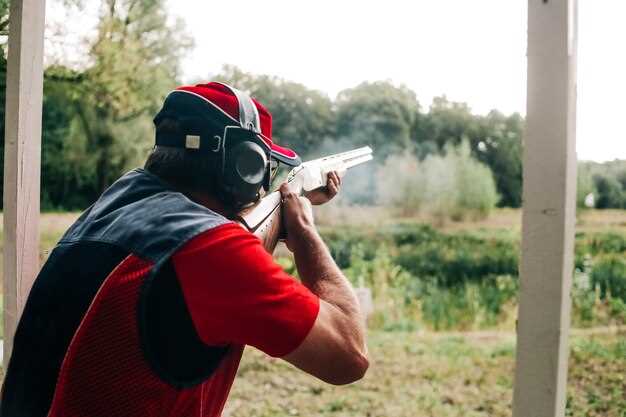How to Mount a Rifle Scope Properly


When it comes to achieving precision in shooting, mounting a rifle scope correctly is paramount. A well-mounted scope not only enhances your ability to acquire targets quickly but also ensures that your shots are consistently on point. Understanding the intricacies of scope mounting can make all the difference between a hit and a miss during critical moments in the field or at the range.
Proper mounting is an art that involves more than just aligning the scope with the rifle. It requires attention to detail, the right tools, and a solid grasp of the mechanical aspects of your equipment. Whether you’re a seasoned marksman or a novice shooter, mastering the correct techniques for securing your rifle scope will greatly contribute to your overall accuracy.
In this guide, we will explore the essential steps and best practices for effectively mounting a rifle scope. From selecting the optimal mounts to ensuring perfect eye relief and reticle alignment, each aspect plays a critical role in maximizing your shooting potential. Follow along as we delve into the specifics that will set you up for success on every shot.
Selecting the Right Mounting Base for Your Rifle Scope

Choosing the correct mounting base for your rifle scope is essential for achieving optimal accuracy. The mounting base serves as the foundation for your scope and directly affects its alignment and stability. Understanding the types of mounting bases available and their compatibility with your rifle is crucial in this selection process.
There are several types of mounting bases, including one-piece and two-piece bases. One-piece bases provide a solid platform, minimizing the potential for movement and ensuring a more stable sighting system. Two-piece bases, while allowing for more versatility in scope positioning, can sometimes introduce slight misalignment if not installed properly.
Additionally, consider the height of the mounting base. A higher base may provide better clearance for the ocular lens but could lead to a more challenging cheek weld. Conversely, a lower base can offer a more natural shooting position but may cause interference with the rifle’s action or iron sights. Select a height that balances comfort and functionality.
It is also important to pay attention to the mounting system compatibility. Different rifles and scopes may require specific mounting rings and bases that match the specifications. Ensure that you check the diameter of the scope tube and the rail type on your rifle, such as Picatinny or Weaver, before making a purchase.
Lastly, always prioritize quality when selecting a mounting base. A well-made base from a reputable manufacturer will provide greater durability and reliability during use. By carefully considering these factors, you can choose the right mounting base for your rifle scope, contributing significantly to your shooting precision and experience.
Aligning the Scope to Achieve Perfect Parallax Adjustment
Achieving perfect parallax adjustment is crucial for accurate shooting, and it begins with properly aligning your scope. The first step is to ensure that your scope is mounted securely to the rifle using appropriate mounting rings and bases. This stabilizes the optics and helps maintain a consistent point of aim.
Once the scope is mounted, focus on the reticle. Aligning it with the target is essential for precise shooting. Look through the scope and adjust it until the crosshairs perfectly overlay your target. This alignment will minimize parallax error, which occurs when the reticle and the target are not on the same focal plane.
To further enhance accuracy, engage the parallax adjustment feature of the scope, if available. This adjustment allows you to fine-tune the scope according to the distance of your target. Start by focusing on a target at a known distance, then rotate the parallax knob until the reticle appears sharp and defined. This step ensures that any minor movements of the head do not displace the point of impact.
Additionally, it is beneficial to test the alignment at different distances. Adjust your parallax for various ranges and observe if any inconsistencies occur. Properly aligning the scope through these methods will ensure that you can achieve the desired accuracy when aiming at different targets.
Lastly, once you have achieved a clear parallax setting, it is advisable to check the mount stability one more time. Confirm that there are no loose screws or components, as vibrations during firing can affect alignment. A secure and properly aligned scope is vital for enhancing your shooting performance, ensuring that your shots hit where you intend.
Tightening and Testing the Scope Mount for Reliability

Once the scope is mounted in place, the next crucial step is to ensure that it is tightened correctly. Over-tightening can damage the scope or the mounting hardware, while under-tightening can lead to misalignment during firing. Use a torque wrench to achieve the manufacturer’s recommended torque settings for the scope mounts. This tool ensures that the screws are fastened evenly and securely, providing a stable foundation for your scope.
After tightening the mounts, it is essential to test the scope for reliability. Start by performing a mechanical zero, which involves adjusting the scope’s windage and elevation to a neutral position. This step helps in establishing a baseline for later adjustments and confirming that the scope retains its settings during shooting.
Once the mechanical zero is set, take the rifle to a proper shooting range for a practical evaluation. Fire a series of shots at a predetermined distance, noting the point of impact. If the shots are consistently grouping together, your mounting is likely solid. If inconsistencies in grouping are detected, re-check the scope and mounting hardware for tightness, and inspect for any potential shifting due to recoil.
Additionally, after several rounds, visually inspect the mounts and screws for any signs of loosening. This process should be repeated periodically, especially if the rifle experiences significant use or is subjected to harsh conditions. By ensuring the scope mount is tight and reliable, shooters can enhance their accuracy and overall shooting experience.




